



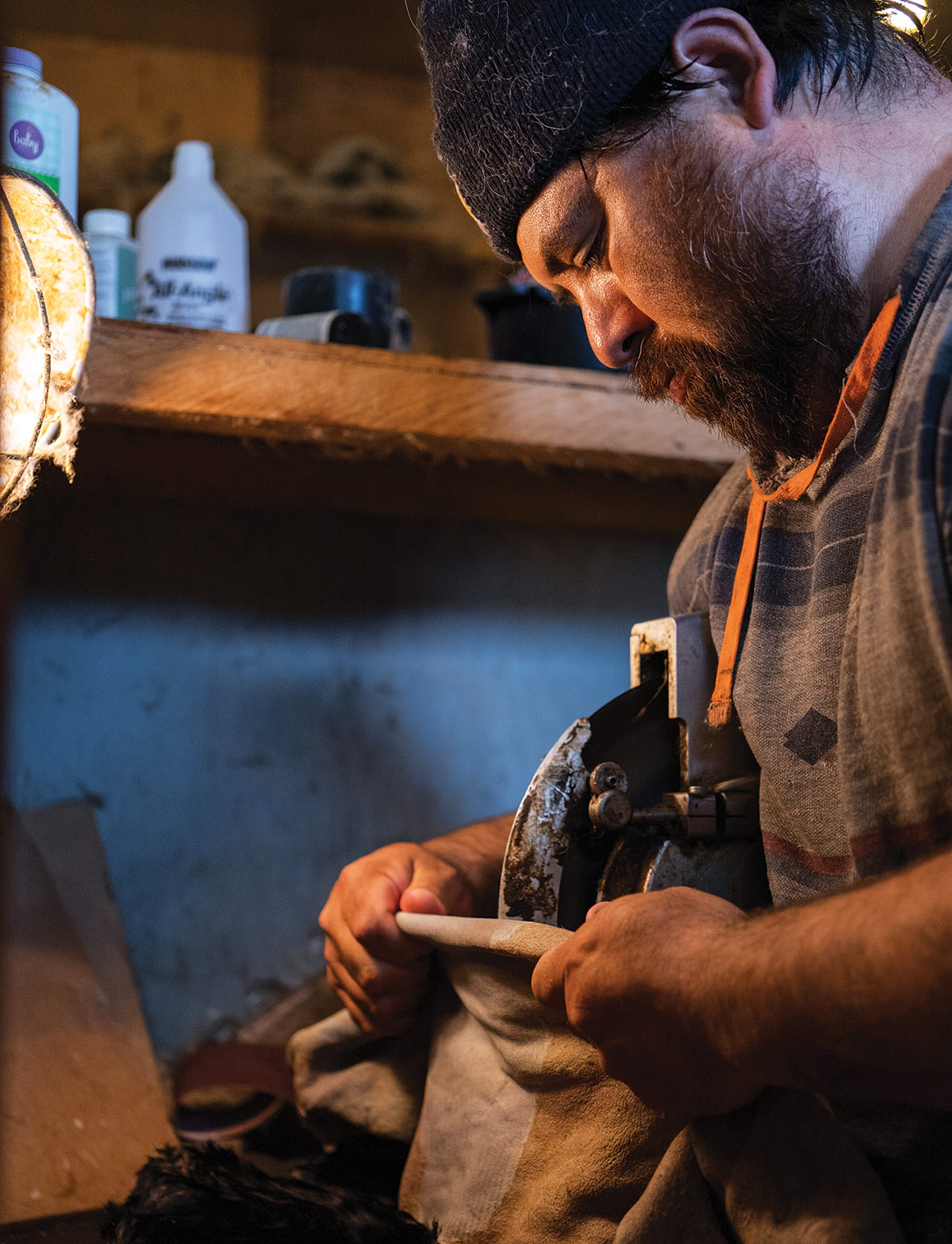
The Rocky Pass Tannery

n a hot and sunny day in July, I approached the sun-bleached picnic tables with an expression of awe across my face. Spread atop the faded red planks were luscious, dark sea otter hides with penciled lines and the focused hands of eager teens equipped with razors about them. At the head of the farthest table stood Scott Jackson: co-owner of the Rocky Pass Tannery.
Located in my hometown of Kéex’ Kwaan in Kake, Alaska which is a Southeast Alaskan village with a population of around 500 people. The Rocky Pass Tannery has become a fundamental contributor to Scott’s and my shared community. I have known Scott since I was a little girl. He is my relative and we are both members of the same, the Tsaagweidi Killerwhale People. He was one of my dad’s best hunting partners in my early years before both Scott and my father had families of their own to hunt with. I have been my dad’s closest hunting partner since then, though our families stayed close.
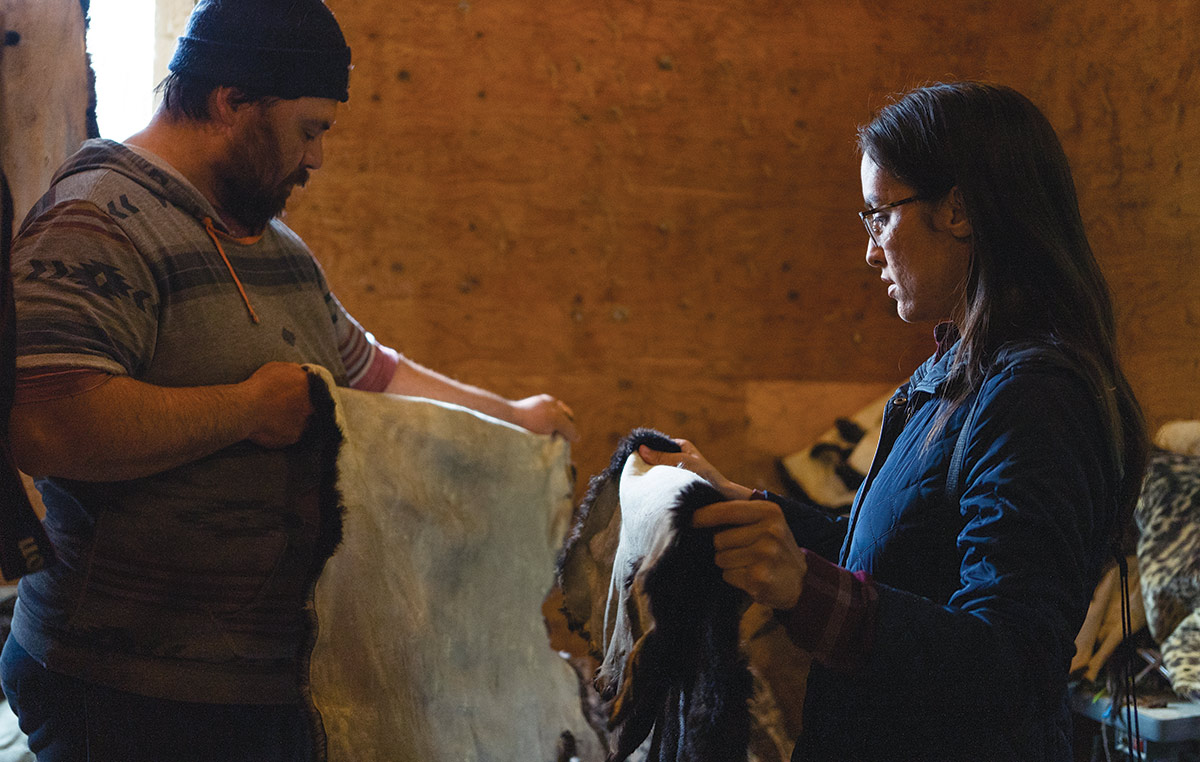
“Fur sewing is of great traditional value” he said, “it helps with regalia making, which enhances song and dance. Sewing also helps mental health; active hands don’t allow people to be idle.” Scott folds the cuts carefully and bags them. “I know it won’t solve everything but sometimes it takes something we understand to create a happy medium that helps us work through our pains.” It is this unique understanding of culture, as one path of many, towards the healing of Alaska Native people, that makes Scott’s business so unique.
Scott is an active community member with a boisterous resumé that reflects the journey he has undergone leading to the Rocky Pass Tannery. His vision for the business was influenced by his desire to highlight, uplift, and support others. Over the years, Scott has taken on many roles in Kake as a fisherman, logger, tree-thinner/pruner, Village Public Safety Officer, and more recently, as a substance abuse prevention specialist for the local health clinic.
The idea for the tannery came about early in Scott’s work as a substance abuse prevention specialist, first focusing on prevention in young adults. Scott shared, “In 2010 we started hunting sea otters to keep friends busy and help them combat addiction and alcoholism.” Though this continues to be a focus in the tannery’s work, it has expanded to serve a broader purpose in our community building on accessibility.
For the older participants with physical limitations, Scott pursued methods to soften the hides. “At the time we thought tanning meant making the furs pretty, or however they sold, but sewers couldn’t sew with them,” he explained. He set out in search of how to soften a hide and learned how to through experimentation and research. He discovered that within a year the tanned hides soften and then they’d stretch the hides so they were easier to work with.
He waved his arms about, smiling and instructing the youth he was working with. I walked toward him, camera in hand, watching tufts of fur blow across the pavement under his car with a stack of hides awaiting their transformation in the trunk.
As I watch him bag each cut piece of fur, I think back on the many businesses I have watched come and go growing up. I can’t help but feel as if he has “cracked the code” to successfully running a business in Kake where high electricity and manufacturing costs make it extremely challenging. In front of me, actively teaching and engaging our village’s youth, producing materials to conserve our cultural traditions while simultaneously promoting the health of our community, was a business that for ten productive years continued to serve people of all ages and walks of life based in tradition, healing, and supporting one another. It hit me that the reason this business succeeded and continues to succeed is because it is rooted in supporting and growing our community by investing in our people and culture.
Engaging and Encouraging Our Youth
With his hands in his pockets, Scott tells the story of how he and the Kake high school basketball team raised the money for their trip to regionals by creating and auctioning a sea otter blanket at one of the final home games. This was one of the many instances in which the tannery has given students the opportunity to make money for themselves, teaching them the economic, cultural, and social value of a skill like this one. Several of Scott’s students have now started their own businesses selling sea otter handicrafts, enhancing their confidence in using culturally-grounded skills to achieve financial independence.
Interns from the Organized Village of Kake, the Kéex’ Kwaan Forest Partnership, Alaska Youth Stewards employees, culture camp participants, Kake City School students: these are all youth that this tannery has supported over the years. The tannery sets an example that entrepreneurism can be less about the individual and more about how you support others. These youth are not only learning the value of their work, but the value and importance of community.
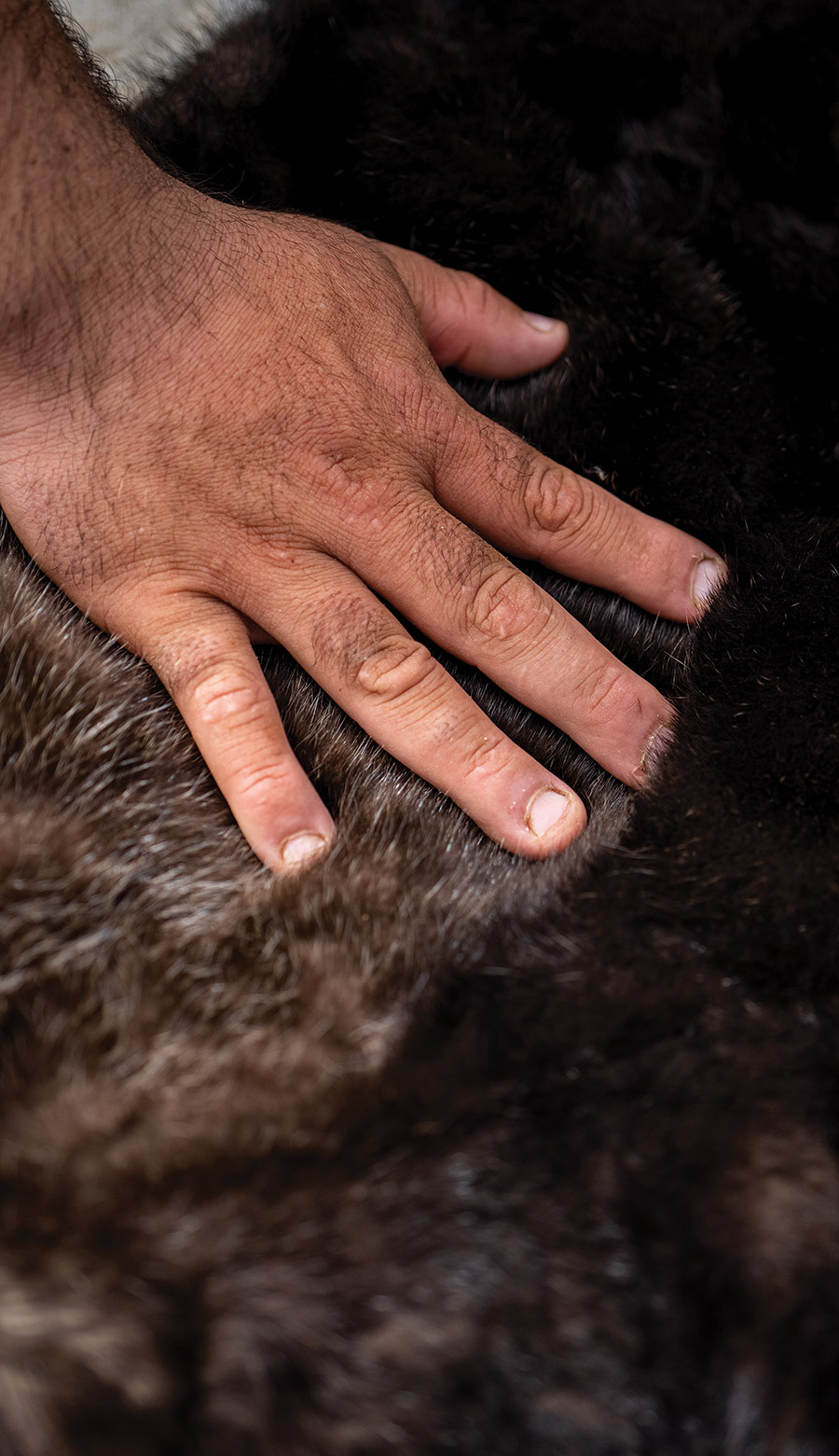
I think back to my early high school years, and how I often felt that the only way for me to succeed meant leaving my community. Watching these students take initiative in the tanning and sewing processes, there is a sense of relief that they will graduate knowing it is possible to continue living, supporting, and finding success in the place they were raised.
Scott whips a freshly cut sea otter pelt and tufts of fur take to the wind. He packages and hands it to one of his students standing by to organize the kits for culture camp. “He is our supervisor for today,” Scott says as he passes the bag to him, “he can’t touch the pelts until they are a product.” There are many Indigenous kids around the region who are unable to participate in these activities due to the current sea otter regulations, though, conversations on these regulations are on the rise yet again.
Currently, the Marine Mammal Protection Act states that an Indigenous person must be one-fourth degree or more Alaskan Native to participate in marine mammal harvest, including sea otters. It is illegal for anyone who is not considered Alaska Native under this definition to actively participate in any manner in hunting, sewing or tanning sea otters until it is considered a significantly altered product, for example a scarf, pillow, or hat.
Recently, Sealaska, the regional Alaska Native corporation, voted to eliminate the blood-quantum requirement for enrollment. This vote is a monumental step forward for those who believe that a person’s lineal descent has more to do with their Indigenous identity than an arbitrary fraction. With this decision, discussions on sea otter harvest regulations are rising: despite the fact that this ruling has no effect on the Marine Mammal Protection Act regulations or sea otter harvest.
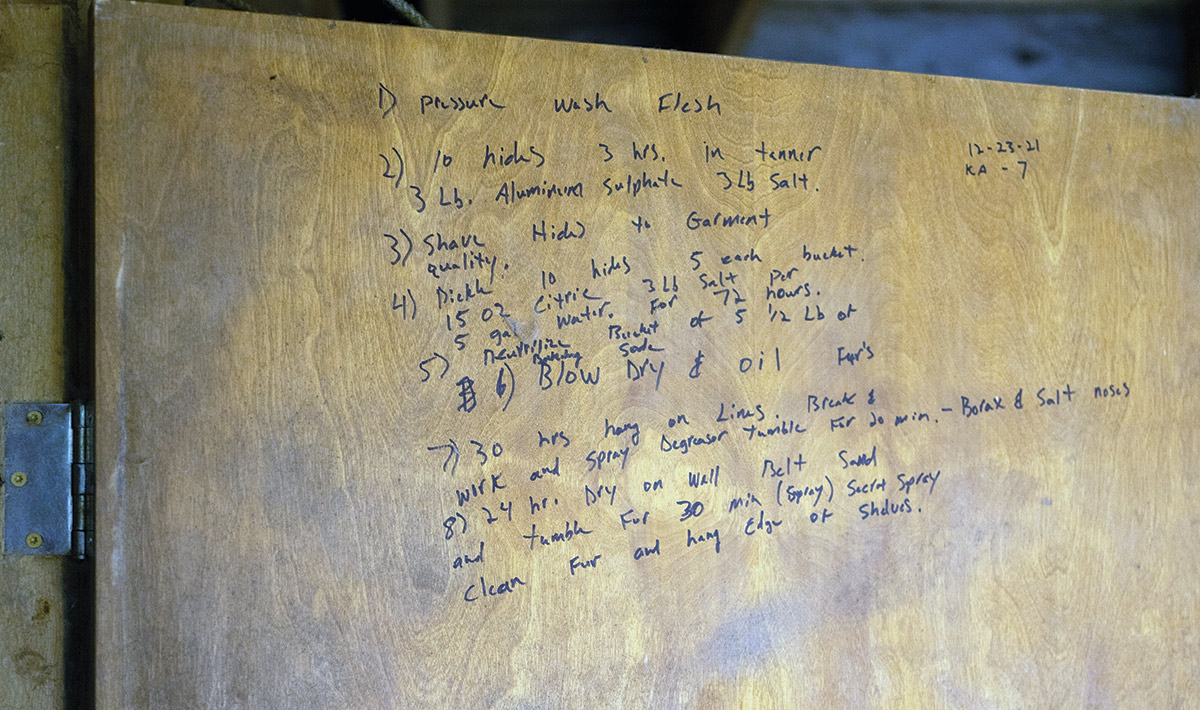
Keeping Our Traditions Alive: In More Ways Than One
“Scott proposed that someone should start a tannery to combat the problem back when I was doing my study [in collaboration with the community] on sea otters in Kake. Now, here he is!” said Ibarra. When she did her doctorate study on the complex resource conflict of how current sea otter populations are impacting the abundance of traditional and customary foods such as shellfish in rural Southeast Alaskan communities, Ibarra worked closely with Scott among many others in the Kake community. In fact, it was Ibarra who proposed this story idea to begin with. She shares the same admiration for Scott’s work as I do in how it combats so many cultural threats at once: cultural erasure, threats to shellfish within a 30 mile radius of our community, and threats to the health of our residents.
“In some areas there are like five pods, and those pods can have about 200 sea otters in them,” Scott exclaims, “They’re showing up in places you never used to see them and crabbing is now limited to only one bay in our area.” The bay referenced is one that my family, as well as many families in our community, depend on for dungeness crab, clams, cockles, and more.
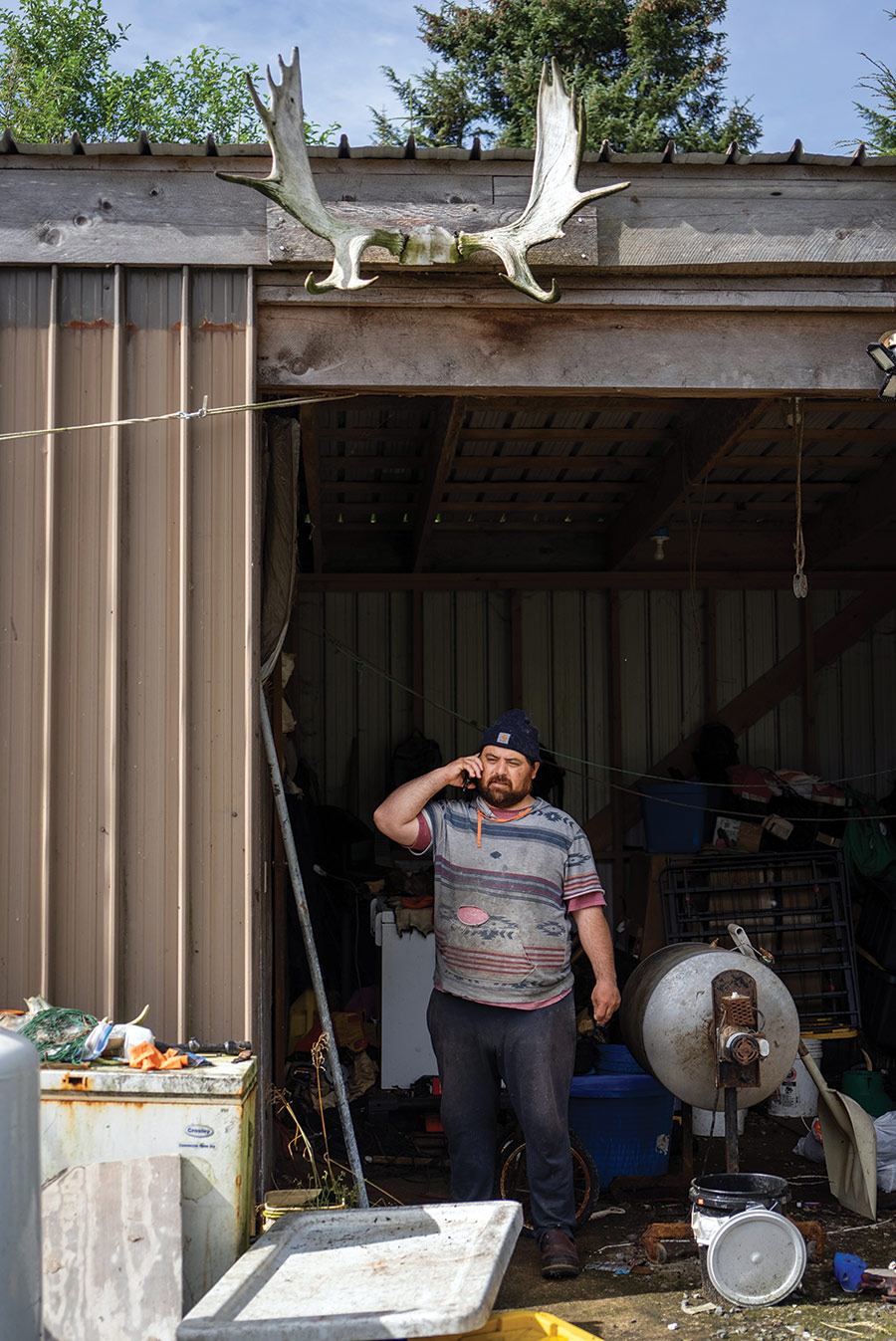
“Now we are trying to even the otter balance [in our ecosystem]. We are making head-way but not much in the battle to win subsistence areas back,” says Scott, “We used to have the best dungy [crab] area around.”
The intention of this tannery is to balance the ecosystem. Sea otter hunting has been a strategy that Indigenous people from Alaska to California utilized at small geographic scales around their communities for over thousands of years and is understood and documented through oral history accounts and archaeological research. Sea otters are an important part of our ecosystem that maintain the balance of kelp forests, embayments, and estuaries too. An example being that without sea otters, sea urchins can overpopulate the sea floor and decimate the kelp forests that provide food and protection for many other marine mammals. (Defenders.org)
In an effort to support the harvesting of sea otters and the localization of our economy, the Rocky Pass Tannery does a few things to support quarter blood quantum Alaska Native residents. One, it offers a fifty-fifty (two-for-one) deal to locals to keep the harvesting consistent. Two, scraps of the hides are given away to local artists, beaders, and other crafters to support their work, and three, local crafting classes are offered by the tannery and its partners.
“This is something that has once been lost in our culture” says Scott whose great grandmother once tanned seal hides on these same shores. This skill will not be lost again if the Rocky Pass Tannery, as well as other rural tanneries can help it.
women’s Empowerment and Looking Toward the Future
“His girls sew, and his wife sews, hunts, and tans… there are many ways that this tannery represents the power of womanhood,” says Ibarra.
Scott hopes to see this artform being taught to more advanced students, with prospective goals of developing future college courses, and teaching tanning processes to kids as an advanced class.
“As we build more and more confidence, hopefully soon we can branch and help other communities start tanneries of their own: our size or bigger in surrounding areas,” said Scott while loading the sewing kits. Tanneries offset a lot of the extra expenses for local people in buying hides, keep the economy local, and decrease the potential wait time for processing and obtaining hides.
“I’ve never ever shared my story. Every hunt is such a chapter: being involved with good people, the strong Kéex’ Kwaan community members that just want to feed their families like I do.”
I thanked Scott for his time before I headed home, more than grateful that he decided to share his story and mission with me: a member of the community his tannery is healing and supporting. It is with pride that I say the Rocky Pass Tannery is a business unlike any other. One that openly teaches consumers about sea otter tanning and crafting in an effort to sustain our people and hopes for the future. This is a business that brings everything and everyone together: protecting the environment, providing opportunities for our people, and engaging and saving our traditional ways of life.